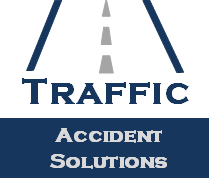CDR for Auto Insurance SIUs and Claims Adjusters
Unbiased evidence used for evaluating auto claims
Benefits of using the Bosch CDR Tool:
- Better case evaluation
- Identification of fraudulent claims
- Liability evaluation
- Better settlement decisions
- Expedited claims cycles
- Efficient operation support
- Confidence in other evidence
Event Data Recorder (EDR) capabilities have become increasingly important in automobile insurance claim investigations because EDRs store potentially important data proven by many insurance carriers to be useful in evaluating auto losses. The EDR is a function of the vehicle supplemental restraint system (SRS). When certain conditions are met, the EDR may record data associated with sudden changes in direction and/or rotation (i.e. a collision). With over 150 million registered vehicles supported, Bosch CDR Tool has become indispensable for the auto insurance industry.
EDR data may aid claim investigation and adjustment by providing unbiased information about the loss such as:
- What was the vehicle speed leading up to the impact?
- Was the vehicle accelerating, slowing, or braking seconds before impact?
- Where occupant(s) were seated and were they belted?
- Order of impacts during an in-line, multi-vehicle collision?
- Was the operator steering left or right leading up to the impact?
- What was the severity of the impact (measured in delta-V)?
- Was the vehicle moving or stopped prior to impact?
- Was a vehicle truly damaged while parked and unattended?
While the information obtained using the CDR Tool can be calculated using traditional accident reconstruction methods, those calculations sometimes rely on subjective witness statements, police reports and other potentially unreliable information. EDR data has been proven reliable, objective, and unbiased.
Civil liberty and privacy groups have raised concerns about the implications of EDRs “spying” on car users, particularly as the issue of “who owns the data” has not yet been fully resolved. This is often the case with new technologies as the general public doesn’t understand the technology or its purpose. The EDR does not record audio or video, does not have GPS capabilities, and it does not record driving habits. It only records a short amount of time (typically 5 seconds) prior to an impact.
The best practice when retrieving EDR data using the CDR Tool is to have a release form and ask the insured to agree and sign it before retrieving the data. The answer can be as simple as “yes, you have permission” or “no you do not.”
This article is from Crash Data Group, which is the sole source distributor for the Bosch Crash Data Retrieval Product line.
